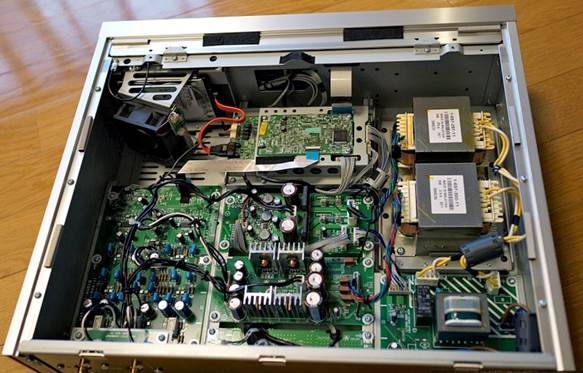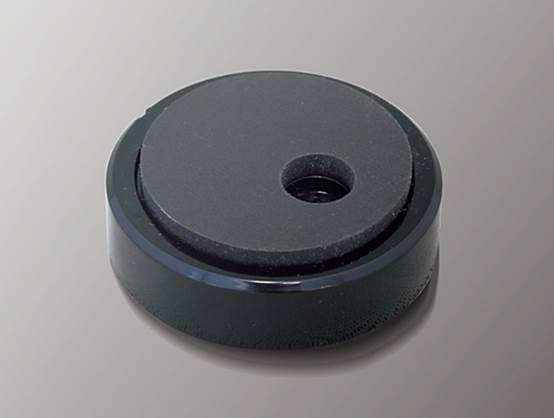Music server
The HAP-Z1ES is a serious statement of intent from Sony.
This is flagship stereo hi-fi, but the fact you’re looking at a server and not
a CD player shows modernity and gives an indication that the Japanese giant is
taking the future of music consumption seriously. The Z1ES sits at the very top
of a whole new range of hi-fi components from Sony, all of which tie in with
the company’s push to support high-resolution audio. As such, the Z1ES copes with
virtually every audio format and sample rate on the planet, including WAV,
FLAC, AIFF and DSD (Direct Stream Digital, see Jargon Buster) format.

Sony HAP-Z1ES
Full control of source material
The HAP-Z1ES is a very interesting machine. The internal 1TB
hard drive brings a slightly different approach to streaming compared with
stand-alone products from the likes of Naim and Cyrus. While their servers are
more than happy to play music from a NAS (Network Attached Storage) device, the
Sony isn’t. In fact it won’t stream any music this way because Sony wants you
to store it all on that 1TB hard drive. It’s more of a closed ecosystem, which
won’t please everyone, but you can see where Sony is coming from. Music on a PC
requires the computer to be on at all times and you need to rely on a network
connection during playback – the internal hard drive method means there’s no
danger of buffering issues, and stability is improved.
To get started, you’ll need to install Sony’s HAP Music
Transfer software on your PC or Mac. You can then specify which music folders
you want the software to access (and which file formats to transfer), and the
software does the rest, moving all those files onto the server’s hard drive.
It’s a simple yet effective way of organizing things. Every time you add new
music to the folder, it’s scanned and transfers across, which also helps
minimize hassle.
No-frills handset
The supplied remote is minimalist and thin. Part of us
admires the simplicity the other part thinks this plasticky, cheap wand isn’t
good enough given the streamer’s beautiful finish. There are just simple
playback controls and ones for volume which you can use if you hook the server
up to Sony’s matching $3289 stereo amplifier, the TA-A1ES.

Sony HAP-Z1ES
As a flagship product, the HAP-Z1ES fits the bill. It’s
modern and retro at the same time, with the neatly finished aluminum chassis
and thick front panel giving off a premium vibe. The front of the unit is
dominated by a large 4.3in LCD display. It’s a good size – bright and punchy,
with plenty of room on there for album artwork as well as track information.
The jog dial lets you scroll through the menus but you don’t
press it to select. There’s a separate ‘enter’ button to the side, which takes
a little getting used to. Sony says including push-to-select would have
introduced unwanted resonance into the player’s structure and hindered its
sound.
Connectivity is very basic. There’s a USB socket around the
back, so you can add an external hard drive if that terabyte of storage isn’t
enough. There’s a standard analogue audio output, or you can connect to a
stereo amplifier via the balanced XLR output. There’s also an ethernet port to
get the server hooked up to your network for when it needs to transfer files.
The HAP-Z1ES is one of the first servers we’ve reviewed to
support DSD files and we’re straight into that format with some Marvin Gaye and
What’s Going On. You’re immediately drawn in by the streamer’s invitingly
smooth and refined character. Gaye’s voice sounds polished and yet there’s
plenty of emotion to tap into. The soundstage is solid, with instruments
convincingly placed, and the Sony extracts plenty of detail from the DSD
stream. You could ask for a bit more bite and attack, but it’s by no means weak
or insipid.

Eccentric
insulator of Sony HAP-Z1ES
It’s not just high-res music that impresses through the
Sony. Play a standard 16-bit/44.1kHz WAV rip of Daft Punk’s Lose Yourself to
Dance and the HAP-Z1ES shows a nice funky fluidity. Pharrell’s high-pitched
vocal peaks without any hardness or harshness, Bass notes sound weighty and
rounded, with even the subtle ones in the background making their presence
felt. The repetitive strumming on the lead guitar sounds tight, distinct and
punctuates the track perfectly.
Similarly, with Adele’s Someone Like You, that effortless
and enjoyable delivery continues. Adele’s beautiful vocal sounds rich and
intimate, flowing as smoothly and clearly as the melodic piano playing. The
Sony does a great job of communicating the emotion and heartbreak of the song
without sounding mannered.
Part of the Sony’s internal wizardry is its DSD Remastering
engine, which converts all music files to DSD, supposedly improving sound
quality in the process. Thanks to the latest software update, you have the
option of turning it on or off, so during testing we experimented to see if we
could hear any differences. Turned off, music seems to have a slightly edgier,
more attacking character. Switched on, the Sony goes for a fuller, slightly
smoother sound with greater body. You lose a little in terms of attack, but we
preferred the balance with it switched on.